An Overview the American College Admissions Landscape for International Applicants
As an international student, applying to Ivy League and top tier colleges in the US is now more competitive than ever.
Command Education’s expertise in guiding international students to stand out in this competitive process is more important than ever before. High grades and test scores used to be enough to get into top colleges, but now that is only considered the basic foundation of a strong application. Over the past few years, we’ve helped our international students authentically evolve into stand-out applicants through extracurriculars, research experience, and project development and gain admission to top Ivy League schools.
Between country-specific admissions trends to the nuances of crafting compelling applications, we know how to best position our international students for admissions success.
What are the top countries these students are coming from and why?
China has the largest numbers of students pursuing undergraduate education in the United States, with India, South Korea, Saudi Arabia and Vietnam following closely behind. For the past decade, China has occupied the top spot by a wide margin as the number of Chinese undergraduates in the US has tripled since 2009-10!
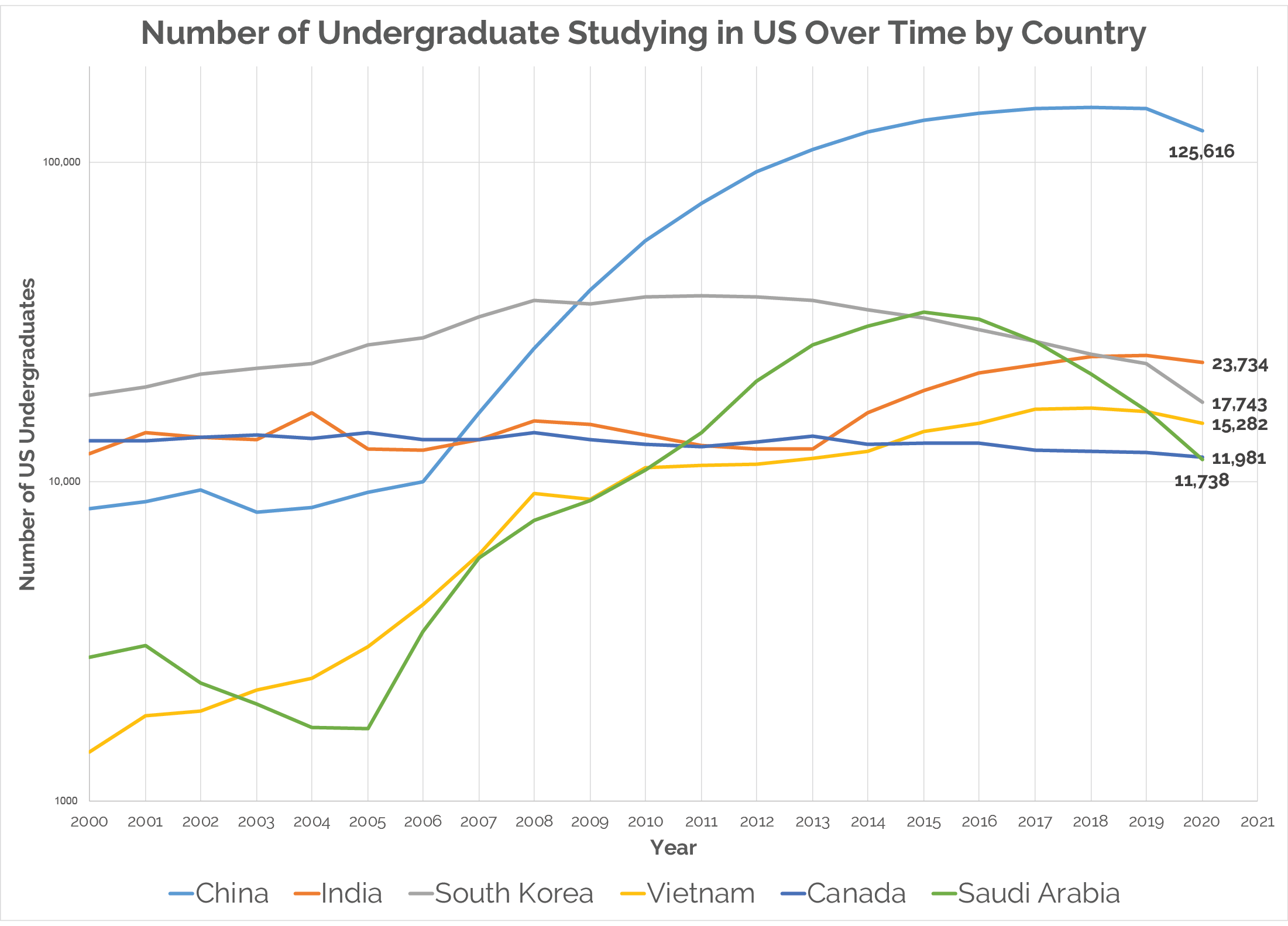
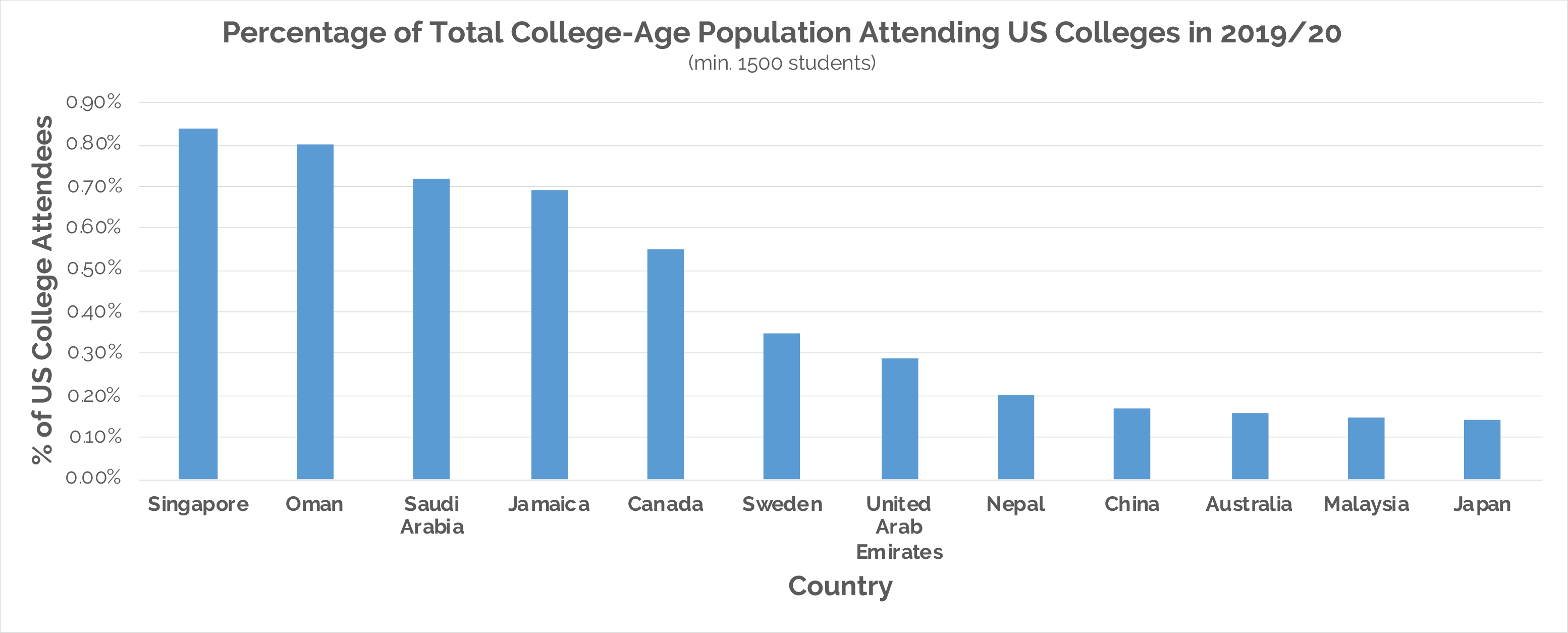
What is the acceptance rate amongst international students at Ivy Leagues over the past few years? Has this increased or decreased? Why?
Though it has become increasingly difficult for students, both domestic and international, to gain acceptance to Ivy League and other top-tier universities over the past few years, acceptance rates for international students have particularly decreased over the past decade. While the proportion of international students within the overall student body at most top schools seems to consistently hover around 10 to 15 percent (see table below), the acceptance rates have significantly decreased, indicating that the challenge international students face stems from increased applicants rather than fewer spots being available.
Admissions Data for International Applicants at Select Ivy-Plus Institutions Over Time
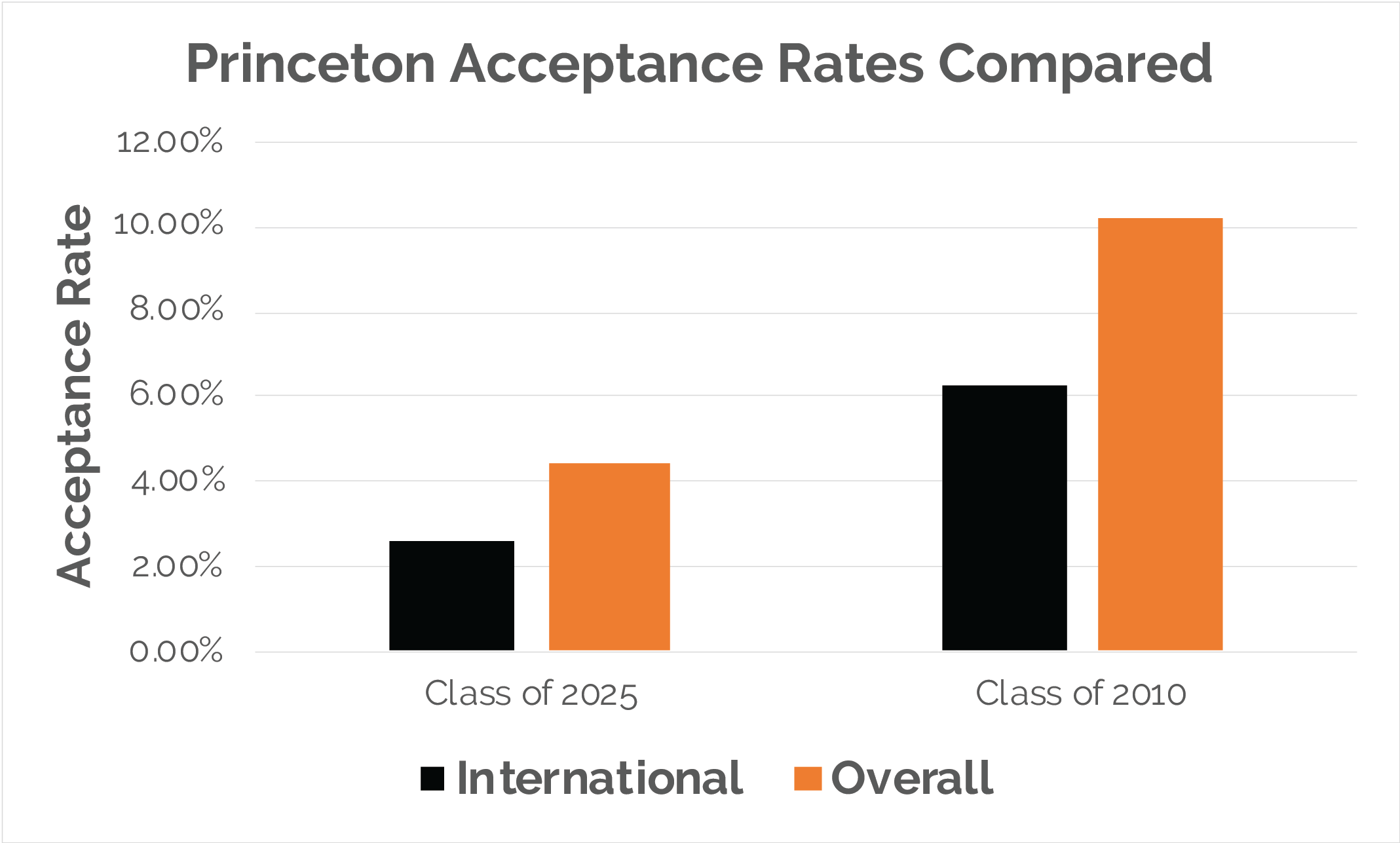
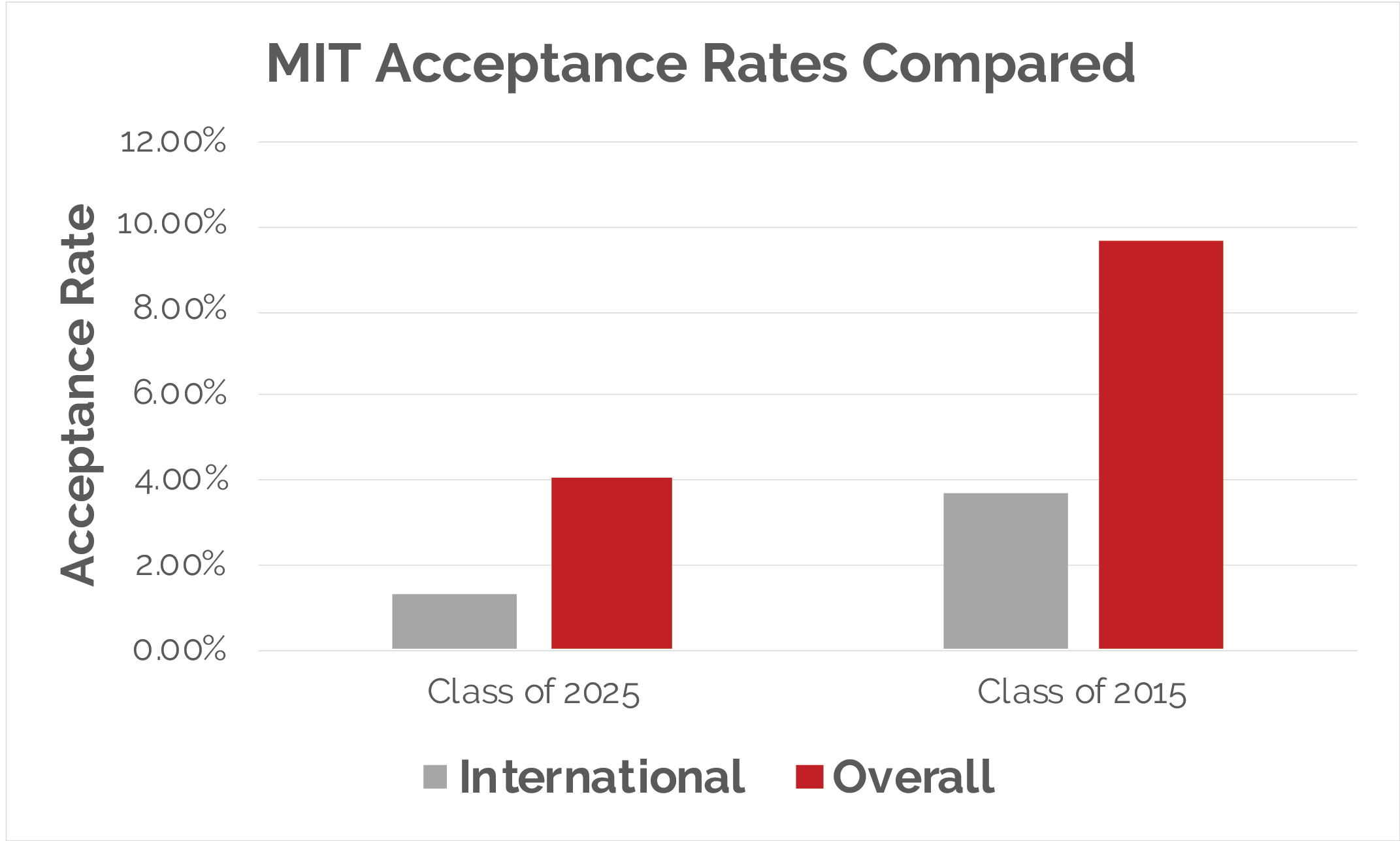
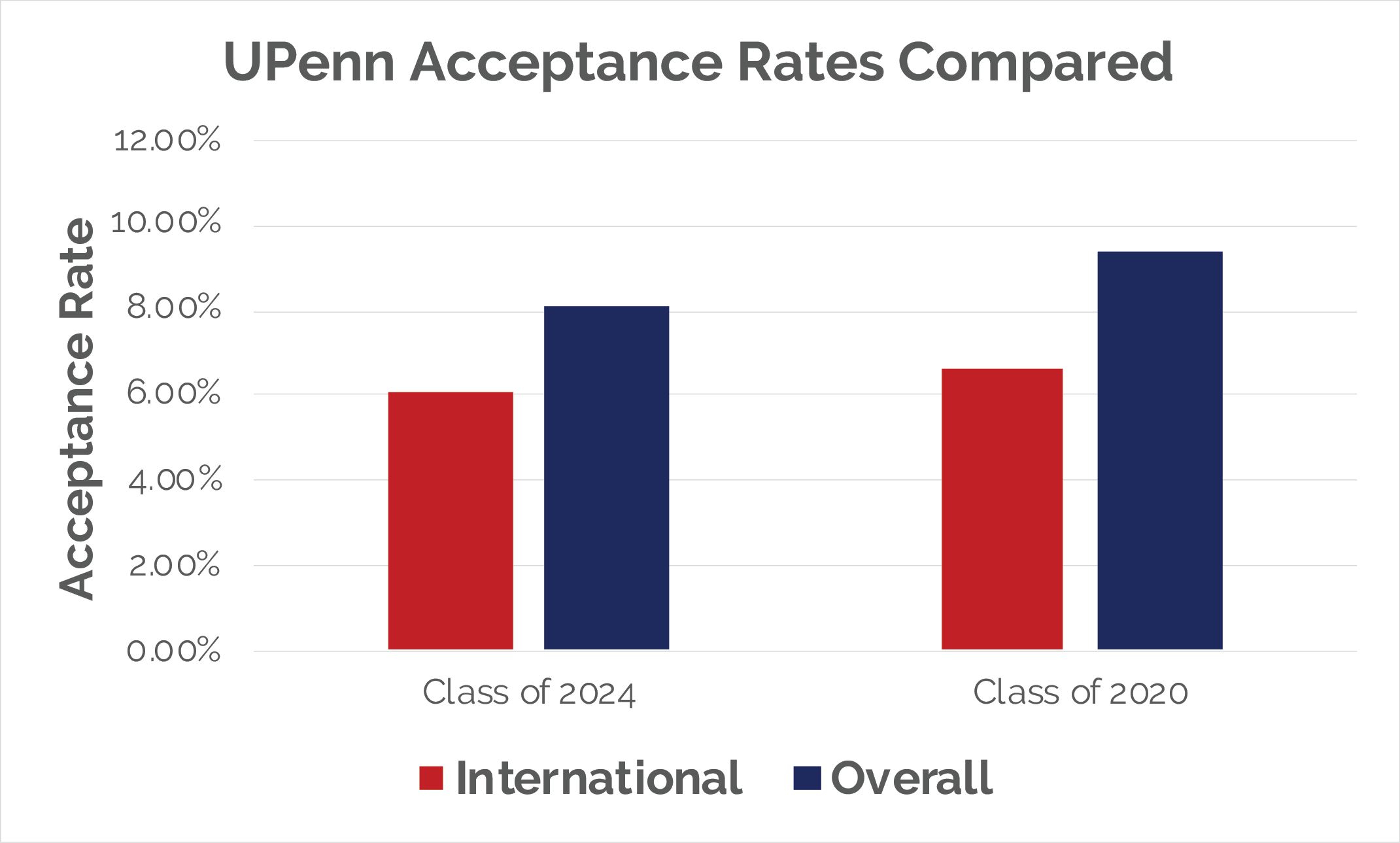
Where do you see growth of international student populations in the next few years?
While many schools have consistently welcomed international students to their campuses, our research suggests, the growth of international students populations isn’t going to happen at the most selective schools. Rather, universities and liberal arts colleges that are still highly selective but with rankings or acceptance rates beyond those of the top dozen schools will see increased international enrollees, including the following schools that have significantly increased their international student populations over the past five years:
Barnard College | St. Olaf College |
The College of Wooster | University of California, Davis |
Denison University | University of California, Irvine |
Skidmore College | University of California, San Diego |
University | Location | % of International Students (2020-2021) |
Mount Holyoke College | South Hadley, MA | 28% |
University of Rochester | Rochester, NY | 27% |
New York University | New York, NY | 24% |
Boston University | Boston, MA | 21% |
Carnegie Mellon University | Pittsburgh, PA | 21% |
Brandeis University | Waltham, MA | 20% |
Bryn Mawr College | Bryn Mawr, PA | 19% |
Grinnell College | Grinnell, IA | 19% |
Columbia University | New York, NY | 17% |
Franklin & Marshall College | Lancaster, PA | 17% |
University of California—San Diego | La Jolla, CA | 17% |
Denison University | Granville, OH | 16% |
Knox College | Galesburg, IL | 16% |
Northeastern University | Boston, MA | 16% |
Rensselaer Polytechnic Institute | Troy, NY | 16% |
University of California—Davis | Davis, CA | 16% |
University of California—Irvine | Irvine, CA | 16% |
College of Wooster | Wooster, OH | 15% |
DePauw University | Greencastle, IN | 15% |
Emory University | Atlanta, GA | 15% |
Smith College | Northampton, MA | 15% |
Swarthmore College | Swarthmore, PA | 15% |
University of Chicago | Chicago, IL | 15% |
University of Washington | Seattle, WA | 15% |
University of Pennsylvania | Philadelphia, PA | 13% |
Johns Hopkins University | Baltimore, MD | 12% |
Princeton University | Princeton, NJ | 12% |
Brown University | Providence, RI | 11% |
Dartmouth College | Hanover, NH | 11% |
Harvard University | Cambridge, MA | 11% |
Stanford University | Stanford, CA | 11% |
Cornell University | Ithaca, NY | 10% |
Massachusetts Institute of Technology | Cambridge, MA | 10% |
Northwestern University | Evanston, IL | 10% |
Yale University | New Haven, CT | 10% |
California Institute of Technology | Pasadena, CA | 8% |
Duke University | Durham, NC | 8% |
* Most data provided by U.S. News & World Report, schools include those reporting more than 15% international students plus all Ivy-Plus institutions)
** ”Ivy Plus” Institutions bolded
Given the intense competition for spots at top schools, what makes international student resumes standout? What are the top pieces of information on the resumes that do so?
In most other countries, acceptance to postsecondary institutions is almost exclusively based on standardized test scores and academic achievements. However, the review process for applications to US universities involves a more holistic approach, valuing exploration of passions, community impact, extracurricular involvement, leadership and in addition to strong academic achievement. Don’t believe us? Here’s what Stanford reported as their rubric in their assessment of candidates (for the academic year 2020-21):
Very Important | Important | Considered | Not Considered | |
Academic | ||||
Rigor of secondary school record | X | |||
Class rank | X | |||
Academic GPA | X | |||
Standardized test scores | X | |||
Application Essay | X | |||
Recommendation(s) | X | |||
Nonacademic | ||||
Interview | X | |||
Extracurricular activities | X | |||
Talent/ability | X | |||
Character/personal qualities | X | |||
First generation | X | |||
Alumni/ae relation | X | |||
Geographical residence | X | |||
State residency | X | |||
Religious affiliation/commitment | X | |||
Racial/ethnic status | X | |||
Volunteer work | X | |||
Work experience | X | |||
Level of applicant’s interest | X |
Notice: extracurricular activities, talents, and character are given the same priority as the academic factors! As such, taking the initiative to pursue extracurricular endeavors related to their passions helps international students stand out from peers applying from the same country.
By analyzing the LinkedIn profiles of current and former international students at the top US universities, our team of researchers were able to identify three common areas of involvement that applicants used to differentiate themselves in the admissions process: volunteerism/community service, research engagement, and extracurricular academic enrichment.
Volunteerism/Community Service
Our research shows that many international students who have successfully gained admission to US colleges and universities have started their own community service based passion project.
Admissions officers see meaningful volunteer projects as an indication of how a student may act as a member of their future college community. Colleges want students who will become active members of their campus, not only contributing on-campus but also to the local community.
Research Engagement
Whether it’s through a governmental organization or a local university, many students often take the initiative to get involved with research. Successful students interested in STEM often take advantage of the opportunity to explore their interests by conducting research at a local institution.
Extracurricular Academic Enrichment
Online learning platforms have made accessing quality instruction on topics from coding and investing to creative writing and graphic design possible for students all over the world. We found many students who succeeded in the American admissions process obtained credentials from platforms like DataCamp or Coursera/edX. Seeing these additional enrichment opportunities on a student’s application shows the admissions committee that the applicant would go the extra mile to explore his or her interests. Students should not feel limited to the academic subjects offered at their school, rather they should feel empowered to take advantage of outside opportunities to explore their interests.
Still Crucial: Standardized Testing
While these holistic factors have become increasingly more important to colleges and universities, especially as they have adopted test-optional policies for standardized testing over the last few application cycles, we still recommend that international students do everything in their power to sit for standardized tests. Not only should students take standardized tests, but they should earn top scores in order to be competitive applicants to US schools.
Schedule a Consultation
Fill out the form below and we will call you back to schedule an appointment for a consultation.
